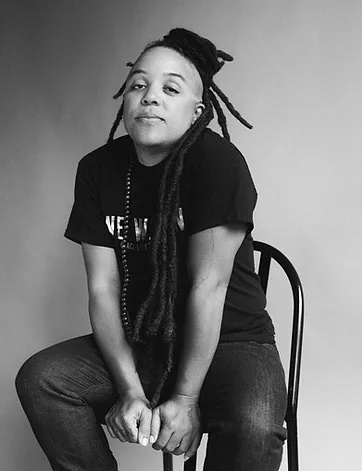Syrus Marcus Ware’s webinar for the Counter Memory Activism Speaker Series asked the fundamental question: how do we archive the unarchivable? Archives as we know them document histories that are predominantly white and heterosexual. Ware calls the centring of white, heterosexual narratives “the whitening process” of the archives. When this sole perspective is archived, memory can become ahistorical. We see one version of history represented in the archives and we lose or misremember the history of people of colour and queer folks. These folks on the margins are considered non-archivable. Ware desires to make the perspectives of those on the margins, particularly queer, trans, and BIPOC activists, the centre of archival exploration.
 What we choose to ‘counter-archive’ challenges the values and the memories that are considered worthy of archiving. Ware chooses to remember and centre the narratives of the great activists of the past and present who have fought for radical love and social justice. Activists forming part of this counter-archive and activist genealogy include Marsha P. Johnson, Miss Major, and Ravyn Wngz. They are just a few of the names Ware centres in his discussion. These folks are part of a long legacy of activism on the margins that Ware refuses to de-centre in our archival conversations.
What we choose to ‘counter-archive’ challenges the values and the memories that are considered worthy of archiving. Ware chooses to remember and centre the narratives of the great activists of the past and present who have fought for radical love and social justice. Activists forming part of this counter-archive and activist genealogy include Marsha P. Johnson, Miss Major, and Ravyn Wngz. They are just a few of the names Ware centres in his discussion. These folks are part of a long legacy of activism on the margins that Ware refuses to de-centre in our archival conversations.
The archives as a physical space can be inaccessible and not inclusive. In response, Ware argues that those on the margins should become the archivists. By doing this, the archives can access the counter-memory stories and teachings from community elders. The archives should remind us of community conversations. We should be able to commune with the archives.
Ware’s Wallpaper series, begun in 2015, depicts queer, trans, and BIPOC activists and artists of the past and present in assemblages of dizzyingly gorgeous wallpaper patterns. Ware’s wallpaper art displays the significance of communing with the archives. For Ware, archival material can be celebrated beyond the confines of the room through which archives are catalogued and stored. The Wallpaper series was inspired by the wallpaper in centuries past; when the rich and privileged could adorn their homes with cameo jewellery, prints, and paintings of themselves. What would be the impacts of having activists as our wallpapers or on our canvases? Ware expands our conception of what counts as archivable by bringing the archive into the home and using art as the vessel. The Wallpaper series asks us to imagine how we would commune in our home environments with these important figures. Ware urges us to envision a world of the future where we de-centre the monuments and archives of our country’s oppressive history and to celebrate the legacies of activist vanguards.
Izzy Ortner is a fourth-year student studying a combined honours in Contemporary Studies and political science.

